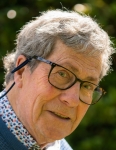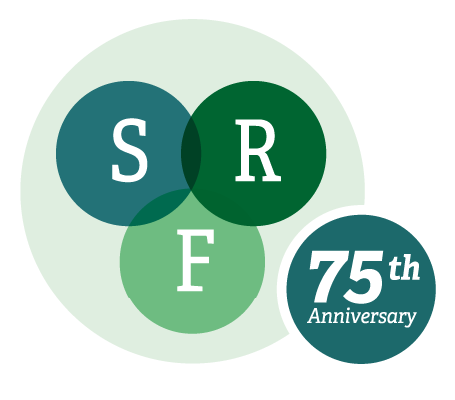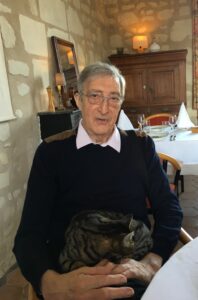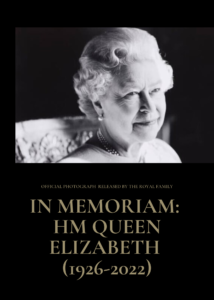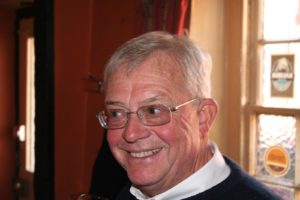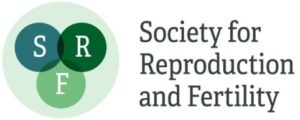In Memoriam
Professor Rex Scaramuzzi (1944-2023)
With sadness we report the death of Professor Rex Scaramuzzi, 2018 Marshall Medilist our condolences go out to his family at this difficult time.
Rex is remembered by his good friend and fellow researcher Professor Graeme Martin, please click here to continue reading.
Emeritus Professor Frank Cunningham (1933-2022)
It is a great sadness to report the death of Emeritus Professor Frank Cunningham who passed away peacefully on 24th June, aged 88, after a short illness.
Frank was born in Bootle, Liverpool in 1933. Having spent some of his childhood as a wartime evacuee up the coast in Southport, he returned to study at St Mary’s Catholic grammar school and then enrolled on a dentistry course at the University of Liverpool. However, he soon realised that dentistry was not his true calling and transferred to a Physiology and Biochemistry degree. After graduation, Frank moved to Birmingham where he gained an MSc and PhD in the emerging field of reproductive endocrinology under the supervision of Wilfred Butt and Carl Crooke. His research involved the development of methods for the purification and assay of gonadotrophins extracted from human urine and pituitary glands. This work played a vital contribution to the development of new ways to treat female infertility and paved the way for ART procedures such as IVF that rely on purified gonadotrophins to stimulate multiple follicle development. After joining the University of Reading in 1964 as a lecturer in Physiological Chemistry, Frank’s research focus shifted away from human hormones to the reproductive endocrinology of farm animals; this change of focus made his research better aligned with the agricultural/animal science work ongoing at the University. In later life, Frank expressed some regrets that he moved away from biomedical research. Nonetheless, over the ensuing decades, his group made many telling contributions to animal science, particularly on the neuroendocrine regulation of GnRH and gonadotrophin secretion in domestic fowl, and seasonal breeding in sheep. He rose through the ranks of academia, being promoted to a Readership in 1976 and Professorship in 1987. Frank supervised over 16 PhD students from around the globe, won a steady stream of research grants and published over 80 papers, reviews and book chapters.
Frank served as inaugural Head of the University’s School of Animal & Microbial Sciences. This was a challenging role requiring great tact and diplomacy; it involved the merger in 1988 of three separate departments that each had their own head, their own team of clerical and technical staff and their own way of doing things – somehow Frank managed to build bridges and bring everyone together in an amicable and cooperative way to ensure the success of the new school. He also served as Warden of one of the University’s halls of residence (Wessex Hall) from 1981 to 1991, a role he enjoyed greatly.
Frank was a long-standing member of the Society for the Study of Fertility/ Society for Reproduction and Fertility (SSF/SRF), Society for Endocrinology (SfE) and European Society for Comparative Endocrinology (ESCE) and was a regular attendee and contributor to their meetings. He served on the council of management of each of these societies including a 6-year term as secretary of the ESCE (1977-1983) and served on the editorial boards for journals published by these societies (Journal of Reproduction & Fertility; General & Comparative Endocrinology; Journal of Endocrinology).
Frank was a highly entertaining and popular lecturer with a gift for explaining complex ideas to students in an accessible and humorous manner. At research conferences, he also had an uncanny ability to ask the speaker a pertinent question despite having seemed to nod off for most of the presentation, in synchrony with the dimming of the houselights. As a PhD supervisor, Frank’s approach was to give his students freedom to develop their own ideas; he didn’t try to micro-manage but was always there to offer guidance and advice and open the right doors to allow planned research to go ahead. As a former PhD student and colleague, it has been a true privilege to become acquainted with him and I am forever grateful for his inspiring mentorship and enduring friendship over so many years. Above all, Frank was a warm and sociable person with a colourful and magnetic personality, and a characteristic laugh and twinkle in his eye. He loved meeting and engaging with people from all walks of life – not just endocrinologists and fellow Everton supporters! He was a good talker and enjoyed lively discussions on all manner of topics. After retirement, Frank and his wife moved to Henley-on-Thames where they greatly enjoyed walking, socialising, and making many new friends in the town and its beautiful surroundings. Frank held a strong religious belief throughout his life but he was not at all sanctimonious.
Frank is survived by his wife Rita, one son, two daughters, three grandchildren and one great grandchild. He will be missed greatly.
Phil Knight
July 2022
Passing of Professor David T Baird
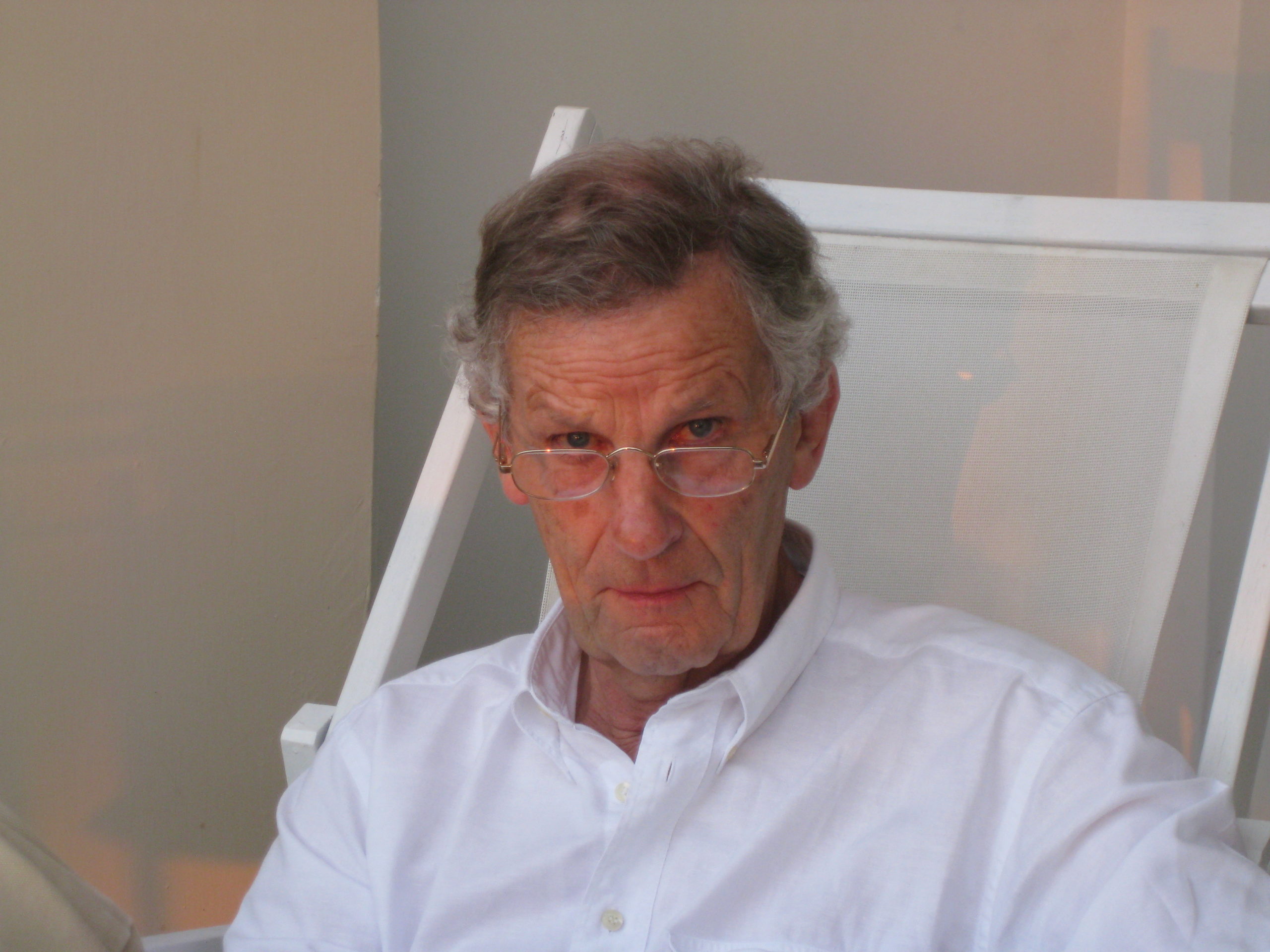
It is with great sadness that the SRF announces the passing of Professor David Baird on Feb 12 2022 at the age of 86. David was a devout supporter of the Society for more years than most of us can remember and his contributions to the field of clinical reproductive biology truly unparalleled. His internationally recognised clinical expertise included the critically important areas of safe medical abortion and contraception amongst many others. David was also known for his unrelenting promotion and use of essential animal models to address key clinical questions and this was often a theme to his many contributions to the SRF. In recognition of David’s outstanding contributions to the study of fertility and reproduction, he was awarded the then SSF (now SRF) Marshall Medal: the Society’s premier award. David will be missed by many around the world and the SRF offers its most sincere condolences to Anna, his family and close friends.
Richard Lea (SRF Chair)
Please click here to continue reading.
Passing of Dr George Foxcroft
1944 – 2021
On December 6, 2021 George passed away unexpectedly while cross country skiing on one of his favorite trails at the Blackfoot Recreational Area.
George was born on December 8, 1944 to Kate and Spencer Foxcroft in Leeds, England. He is survived by Margaret, his wife of 52 years, children Simon (Tara), Michael (Jessica), and Katherine (Brad), and his beloved grandchildren Emma, Megan, Spencer, Will, Jonah, Ben, Ollie, Jamie, and Anna.
Please click here to continue reading.
Passing of Professor Roger Short
It is with immense sadness that we announce the passing of Professor Roger Short in the early hours of August 6th 2021. Roger is widely described as both a legend and pioneer of Reproductive Biology, iconic in his massive contributions to so many fields and a mentor for reproductive specialists and biologists around the globe. His scientific achievements are astounding, his textbooks are revered as a primary source of information for students and academics alike and his numerous papers inspiring in every way possible. The SRF was honoured to have Roger as a stalwart supporter for decades and he epitomised the very foundation values of the Society. In the UK, Roger will always be fondly remembered as director of the Medical Research Council unit at the University of Edinburgh (1972-82) and in 1995, he was awarded the SRF highest accolade of the Marshall medal. Roger had a passion for teaching and supporting the younger generations and his reputation for the delivery of charismatic lectures to students, or at numerous conferences, is truly astonishing. Roger was a remarkable person in every way and will be sadly missed. Our thoughts go out to his partner Marilyn, his children, wider family and to his closest friends. Roger, your unsurpassed legacy will continue to inspire generations to come.
SRF Council
Jock Findlay, Geoff Shaw and Peter Temple-Smith remember Professor Rodger Short.
Professor Roger Short AM FRS FAA died on 6 August, 2021, aged 91 years.
Roger was a great scholar, researcher, teacher, mentor and raconteur. He touched many people in all the continents of the world. He will be missed, not only by his family and for his prodigious and extensive research output, but also for his friendship and the twinkle in his eye His contributions to reproductive science were recognised by SRF by awarding him the Amoroso Award and the Marshall Medal. Please click here to continue reading.
In Memoriam of Professor Keith Inskeep
Rememberd by Professor Fredrick Stormshak, Oregon State University
The field of Reproductive Biology has lost a giant in the passing of Keith Inskeep on August 5, 2021. Keith earned his doctorate degree in Endocrinology at the University of Wisconsin in 1964. His entire career in research and teaching was spent at West Virginia University where he rose in rank to Professor. For more than 50 years he conducted basic and applied research on various aspects of reproductive biology of cattle and sheep.
His productive endeavors in research were due in large part to the many graduate students and post-docs that he recruited and mentored. The research he guided was exemplified by adherence to the true scientific method. His research was always based upon well-defined hypotheses, tested by carefully designed experiments with the resulting data subjected to appropriate statistical analyses. Although the majority of his research was basic in nature, Keith recognized and understood the plight of the livestock producer.
His applied research endeavors were focused in developing practices that would improve reproductive efficiency of cattle and sheep. In addition to his published research Keith contributed to his field of science through years of service in the American Society of Animal Science (ASAS) and the Society for the Study of Reproduction (SSR). In recognition of his leadership and service, he was named a Fellow of ASAS and was elected President of SSR. While his scientific contributions have been duly noted, there are character traits that defined Keith as a down-to-earth decent and wonderful friend to many. Regardless of time or place, he always had a warm greeting for whoever he met whether it be a friend or complete stranger. Keith had the amazing ability to retain by memory significant published research and for many of his friends it was sometimes more expedient to call Keith rather than perform a literature search. It gave him great satisfaction to know he had helped someone in need.
His legacy will live on in all who had the pleasure of working with him and knowing him during his life on this earth.
Passing of Professor Henning M. Beier, Aachen, Germany
We are sad to inform that Professor Henning M. Beier, former chair in Anatomy and Reproductive Biology at Aachen University and long-standing SRF (and SSR) member, passed on April 11 aged 80. He was one of the pioneers in embryology, embryo-maternal dialogue and embryo in vitro culture in Germany. As member of the German National Academy of Science Leopoldina he was strongly involved in the legislative procedures of the German Embryo Protection law and Stem Cell law. He published more than 300 papers, including book and textbook chapters as editor and author. His name will always be connected with “uteroglobin”, a hormone-dependent uterine protein discovered by him in 1966. He was a very open-minded person, always had a smile on his face, was warm-hearted and understanding, adored by his students and co-workers. We remember him with great gratitude.
Professor WR (Twink) Allen
It is with profound sadness that we announce the passing of Professor Twink (WR) Allen, who died in Dubai on 6 June 2021 after a very short illness. Twink will be forever remembered as a pre-eminent pioneering scientist in equine reproduction who has also significantly influenced how breeding mares are clinically managed. These scientific achievements were matched by his enthusiastic, determined and hard-working approach consistently applied in his endeavour to search for new knowledge. As a consequence of these qualities, combined with his openness to welcome a constant stream of visitors to his laboratory, he has inspired and influenced students and scientists from across the globe, many of which have gone on to play major roles in science and clinical practice. Having regularly attended SRF conferences and held membership for over 50 years, as well as being the recipient of the Marshall Medal in 2009, Twink was well known to many in the SRF community. His friendship, mentorship, charismatic seminars and unwavering support for reproductive biology will certainly be missed. Our thoughts go out to his partner, Sandra, his three children and grandchildren and wider family. Twink, you may have departed our earth but the substantial impact you had on our field and those that work in it will live on.
Dr Robert Michael Moor (28/09/1937 – 10/03/2021)
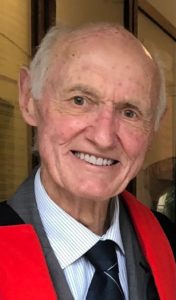
Lynn Fraser
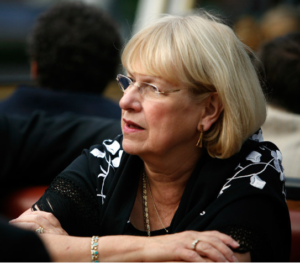
We are sad to announce the passing of Lynn Fraser, Honorary Member of the Society for Reproduction and Fertility.
Please click here to read the obituary that appeared in ESHRE.
Brian Setchell (1931 – 2018) and Guido Verhoeven (1945 – 2018)
It is with the greatest sadness that we report the recent deaths of two of Andrology’s greatest pioneers, Brian Setchell (11 July) and Guido Verhoeven (19 August). Two very different characters from opposite sides of the world (Brian from Adelaide, Guido from Leuven), who investigated andrology from very different angles, but both outstanding scientists who shaped the course of andrological research and had big influences on the thinking and careers of the two of us. Andrology can ill afford to lose such giants of the field, whose ideas so influenced the course of research of many of us who still draw breath.
Brian, a vet by training, was an ‘old school’ physiologist, a discipline which he explicitly reclaimed , and who single-handedly (or with very few but outstanding partners such as the late Geoff Waites) worked out how the extremely complex testis functioned as a complete/integrated unit; its temperature control (and heat susceptibility), its fluid dynamics (and the foundations for the functional blood-testis barrier), its hormonal regulation, its peculiar vasculature and the variation of these aspects amongst a very broad range of species (domestic, farm, rats monkeys) as well as observations on humans. His contributions over a 20-year period from around 1970 literally forms the bedrock of what we understand and accept today about how the testis actually works. Other key aspects also benefited from Brian’s insatiable scientific curiosity and creativity, such as how drugs and elevated temperature affected testicular function. His breadth of knowledge and work-rate were phenomenal, and he had a great ability to focus all of this on the next scientific question and design the appropriate experiments, no matter how tricky and demanding these might be; the fact that virtually all of his studies involved sampling from live whole animals will seem almost alien to young investigators today. No task was too great if it would deliver the answers that he sought. An illustration of this was when he wished to translate the works of Enrico Sertoli, the discoverer of Sertoli cells, who was at that time a shadowy figure for most scientists. Brian simply learnt Italian! Like many an Aussie, Brian was forthright in his views, but always had a twinkle in his eye.
Guido was a quietly spoken, scientific gentleman. A man who made his presence felt not by raising his voice, but through his innovative ideas and results and quiet persuasion. Guido was also very much a physiologist in the sense of recognising that what was key was to understand how each new piece of information fitted into the overall picture of testis function and male fertility. However, Guido was also acutely aware that the complexities of testis function, especially its cell-cell interactions, presented a formidable obstacle to gaining new insight. Thus he was a pioneer in the development and optimisation of the culture of testicular somatic cells, making it far easier to study, and manipulate, specific cellular functions, especially of Sertoli cells, but also peritubular myoid cells. In fact, Guido was one of the first to identify that peritubular myoid cells, which were all but ignored by most andrologists, likely played a key role in spermatogenesis via modulation of Sertoli cells. But, unquestionably, Guido’s biggest contribution was to address the most important, unanswered question in andrology ‘how do androgens control spermatogenesis’. Arguably, this is the most fundamental question in male fertility control, yet a clear, evidence-based answer had eluded researchers, such as ourselves, for decades. It was Guido who masterminded the selective knockout of the androgen receptor in Sertoli cells and showed that this resulted in arrest of spermatogenesis in meiosis – published in PNAS in 2003. But this innovation was far more important than its face-value, because it opened andrologists’ eyes to a whole new way of investigating testis function, by ablating cell-selective androgen action, which has now been achieved for every main cell type in the testis. In building upon this scientific breakthrough Guido collaborated widely, and he was in virtually all respects the ideal collaborator – he always delivered what he said and never promised more than he could deliver.
Two very different guys, two outstanding scientists, two visionary thinkers, two giants in andrology who helped to lay its solid foundations. It is a hackneyed phrase, but they really don’t make them like this anymore. We salute you on behalf of andrologists around the world and hope that, inspired by your work (as we were), your successors will emerge to continue to drive andrology forwards.
Richard Sharpe (Edinburgh) and Bernard Jégou (Rennes)
Professor John Biggers
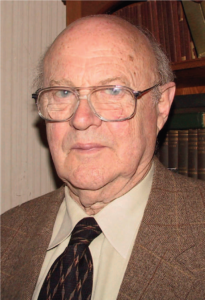
We thank Human Fertility Journal for granting permission for the use of this image
John Dennis Biggers was born in Reading in the UK and initially trained in Veterinary Science at the Royal Veterinary College London. After positions in the Universities of Sheffield and Sydney he returned to London to work with the late Anne McLaren on research which led to one of the most significant papers in the history of reproductive biology and medicine; the Successful development and birth of mice cultivated in vitro as early embryos (McLaren and Biggers 1958). Anne McLaren’s lab notebook recording this event is on public display in the British Library in London. (www.bl.uk/british-library-treasures)
Biggers and McLaren wrote a companion article the same year in the popular science journal, ‘Discovery’ (Biggers and McLaren 1958) explaining the experiments and their wider significance which concluded with these understated but prescient remarks:
It is inevitable that the thoughts of anyone who has worked on the subjects outlined in this article should turn to Aldous Huxley’s fantasy ‘Brave New World’ where he describes completely artificial fertilization and development of human embryos. Fortunately, we are far removed from this frightening prospect. The study of the cultivation and transfer of embryos is none the less of the greatest interest, both from the view of pure science, and because the techniques associated with it are potentially of immense value in the investigation of many biological problems in medicine and agriculture.
John’s subsequent career was spent in the USA – in the Universities of Pennsylvania, Johns Hopkins and then Harvard – rather than in the UK, which most likely explains why he was less well-known in the UK than he should have been; something often mentioned to me by Bob Edwards who regarded him very highly. With his students, Ralph Brinster and David Whitingham and colleagues Ray Wales and Wesley Whitten he established the basic pattern of metabolism in the early embryo (Biggers and Stern, 1973; Leese 2012) which, with relatively modest adjustments has stood the test of time.
I was privileged to work with John at Harvard Medical School in 1980/1 and have documented how this came about and changed my scientific life in a short piece ‘On John Biggers’ which appeared in a Supplement dedicated to him in Human Fertility (2014). Such was his reputation, that knowing him provided me with an entrée to the community of reproductive biologists that no amount of reading of the literature could do.
I still have a copy of John’s CV from 1984 in which fascinatingly, his publications are arranged under a series of headings:
- Estrogen assay and action (1951-1956) publications 1-18
- Design and Analysis of experiments (1951-1984) publications 19-33
- Chemically defined media and organ culture (1957-1965) publications 34- 55
- Culture and physiology of the ovum and preimplantation mammalian embryos (1958-1984) publications 54- 109
- Reproductive Aging (1961-1968) publications 110-113
- Placentation (1962-1964) publications 114-116
- Reproduction in male marsupials (1961-1967) publications 117-121
- Cytogenetics (1963-1968) publications 122-127
- Contraceptives (1969-1976) publications 128-129
- History (1970-1984) publications 130-133
- Human in vitro fertilization and reproductive technologies (1981-1984) publications 134- 137
In the modern era of the specialist, such diversity of interests especially the way many of them overlapped throughout his career, would be most unusual. I cannot resist mentioning the last two-named areas, Human in vitro fertilization and reproductive technologies and History. As regards the first, he was commissioned by the Ethics Advisory Board of the US Department of Health, Education and Welfare to consider the implications of ‘In Vitro Fertilization and Embryo Transfer in Human Beings, the title of the subsequent publication in the New England Journal of Medicine, illustrating the esteem in which he was held and his concern for the applications of the new technologies.
His interest in the history of our subject is epitomized by his fine biography of Walter Heape FRS (1855-1929) A Pioneer of Reproductive Biology, written with Carol Kuntz, and published in 2016. I remember John working (perhaps, laboring would be a better word!) on this when I was in his lab in 1980 and Carol’s input was invaluable in seeing it through to completion 36 years later! – as was that of Roger Gosden (http://www.jamestownebookworks.com) who deserves great credit and the thanks of the profession for publishing this important historical document.
What especially struck me then and now was the enormous number of Post-Doctoral Fellows who had passed through his lab – 34 by 1980 – many of whom became household names in our field. Astonishingly, John continued to be research active until very recently with over 20 papers published in the last 10 years.
In the same Supplement in Human Fertility, one of John’s long-standing colleagues, Michael Summers, wrote two fine, affectionate articles entitled ‘Reflections on one man’s life in Nature: Professor John D Biggers, DSc, PhD’ (Summers 2014) and ‘A tribute to John Biggers: On the Politics of Memory’(Summers 2014a). In these, he attempted to understand John’s approach to science – and much more – and concluded he was
born of a different time. He learned his craft in a different era. – – -He is one of those rare scientists who wishes to understand nature
And again:
John, it seems to me, has in many ways always conducted his scientific studies from the perspective of an enthusiastic amateur. In this regard he is more like the naturalists of the Victorian era
Having said that, this should not give the impression of a casual approach to science: he was fastidious about experimental design and the analysis of data. He was a Fellow of the Royal Statistical Society and many volumes of a journal (Biometrics if I remember correctly) lined his office. Sadly, I was not long enough in his lab for him to teach me some stats! I think this aspect of John’s approach to research is best illustrated by his astonishing work with Joel Lawitts described in their landmark paper in the Journal of Reproduction and Fertility on the Optimization of mouse embryo culture media using simplex methods (Lawitts and Biggers 1991). Surprisingly, in view of the widespread use of the excellent medium which emerged – (K)SOM – this paper has attracted only 156 citations, most likely perhaps because of the availability of a companion review article in Methods in Enzymology (Lawitts and Biggers 1993) cited 360 times. Michael Summers has documented the full history of KSOM and the rationale behind its formulation (Summers, 2014b).
I would like to mention one characteristic of the Biggers’ lab over the years which illustrates his philosophy and generosity on collaborative work. When I was about to leave his lab in January 1981 I said that I would obviously seek his permission to pursue any research which built on the work initiated in his lab. John immediately put me straight on that and said that I could do whatever I liked! – that he never imposed any restriction on the research that people who had visited the lab wished to do subsequently. This was the good advice I have adopted throughout my own career, recommended to others and would never change.
I was pleased to see these sentiments echoed in the official obituary:
www.currentobituary.com/obit/219582
Dr. Biggers was dearly loved by his many students and research colleagues and became a mentor to many of the current leaders in the field of reproductive biology. His labs at U Penn, Hopkins and Harvard were all considered to be highly supportive training grounds for young researchers. He not only encouraged, but expected, independent thinking and the pursuit of original ideas. He was also very supportive of his researchers going on to develop their own labs and own research groups.
John’s wife Betsey died just over a year ago. Like him she was another Harvard academic and supported him wonderfully well in his life and career.
John was a true scholar and warm friend to a great many people, not least myself.
We shall miss him.
Henry Leese
Emeritus Professor
Hull York Medical School
Acknowledgements
Daniel Brison and Human Fertility Journal
Professor John Michael Bedford
We are sad to announce that John Michael Bedford, an Honorary Member of the SRF and member of Reproduction Editorial Board 1998 – 2007, passed away Saturday, February 24 2018, in Philadelphia.
Below are a few lines provided by Patricia S. Cuasnicu, Ph.D who was mentored by Mike Bedford at Cornell University.
For more than 50 years, Mike has made truly outstanding contributions to different areas of reproduction such as epididymal maturation, sperm storage in the cauda epididymidis, sperm capacitation within the female tract, mechanisms and strategies of gamete interaction, and the way the gametes have co-evolved. He was one of the few investigators that have always compared and analyzed his observations in numerous species and not only in the well known and more familiar eutherian mammals, providing novel and interesting ideas about the changes in gamete design and fertilization strategies through evolution and a base from which to think more broadly about the relationship of spermatozoa to the function of the epididymis and capacitation.
Mike continued contributing to the field until the very last minute of his life writing very interesting papers on aspects of reproduction not usually addressed by others and always discussed from a different, broad and original perspective. Because of this, he had a profound influence on those that have worked with him. As Ryuzo Yanagimachi said “He has not only made numerous ground-breaking discoveries but also reminded young researchers of the essence of a research subject and how to look at generally accepted “facts” from different points of view. He has been an irreplaceable “navigator” of mammalian gamete research during the past 50 years”.
Some of us had the enormous privilege of having him as a mentor and those who have not, will surely find a source of inspiration in his work.
Patricia S. Cuasnicu, Ph.D
Dr Stewart Rhind
(March 8th 2013)
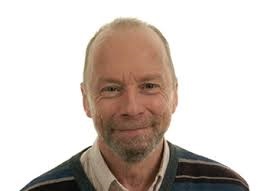 The SRF was saddened by the untimely death of Dr Stewart Rhind who was killed in a car crash with a colleague Dr Julian Dawson on Friday, 8th March 2013. Dr Rhind’s death was described by Emeritus Professor John Robinson as an “immense loss to Scottish and world science. Stewart’s specialism was mammalian reproduction and his work on the effects of nutrition and environmental contaminants on animal and human reproductive health was internationally recognised. I cannot speak highly enough of him and the work that he did.” Professor Robinson, who has known Dr Rhind since 1974, described Dr Rhind as “a model student and a tremendous scientist. Throughout his career he stuck to the job of research, a role in which he excelled”.
The SRF was saddened by the untimely death of Dr Stewart Rhind who was killed in a car crash with a colleague Dr Julian Dawson on Friday, 8th March 2013. Dr Rhind’s death was described by Emeritus Professor John Robinson as an “immense loss to Scottish and world science. Stewart’s specialism was mammalian reproduction and his work on the effects of nutrition and environmental contaminants on animal and human reproductive health was internationally recognised. I cannot speak highly enough of him and the work that he did.” Professor Robinson, who has known Dr Rhind since 1974, described Dr Rhind as “a model student and a tremendous scientist. Throughout his career he stuck to the job of research, a role in which he excelled”.
Dr Rhind worked globally and had latterly collaborated with scientific teams in both the US and Australia in respect of his latest field of study, endocrine disrupters which showed that the fertility of sheep was affected on pastures treated with human sludge, indicating that exposure changed the function of sheep foetuses, including the testes, ovaries and brain. Professor Fowler, Chair of the SRF, said “I have always had the highest regard for Dr Rhind both as one of the nicest people I have known and as a scientist. He has made a tremendous contribution to the field of endocrine disruptors and it has been an honour and a pleasure to work with him”.
Prior to this Dr Rhind’s work included examining nutrition and reproduction in sheep and cattle and the behaviour and welfare of red deer. He had published 137 peer-reviewed papers in support of his research. Dr Rhind had been a member of SSF for many years and, after a brief lapse, rejoined the SRF in 2004. We are truly saddened by his loss.
Professor Catherine A Wilson
(1936-2010)
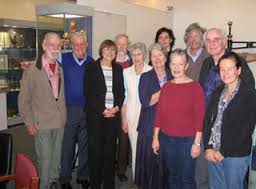
Cathy (third from the left) with some of the SRFs longest standing members
Professor Catherine Wilson – Cathy – passed from this world on the 7 September 2010 but it will be a very long time, if ever, before our individual and collective memories of this indomitable spirit pass. Catherine was a member of the Society for the Study of Fertility/ Society for Reproduction and Fertility for most of her life. Membership of SRF meant more to Catherine than regularly attending the annual meetings to share the latest development s in reproductive biology: many collaborations were started there; colleagues became lifelong friends; not only was the opportunity to engage in science warmly embraced but every opportunity to socialize was equally seized with gusto; she served for many years on various committees of the Society; and was an editorial board member as well as a contributor to the Society’s journal. As with everything in Catherine’s life, she lived her membership with great energy, putting into the Society as much as she got out of it. Catherine loved her research and her contributions to increasing our understanding in several different areas of reproductive biology should not be underestimated. In 2007 she and Ceri Davies published a review on sexual differentiation which has for the last 3 years been in the top 10 of Reproduction’s most cited papers. Below is the eulogy given by Ceri at Catherine’s funeral – it is a fine tribute to a remarkable person.
Catherine had a number of lives: science, art, theatre, eating and drinking, old school friends and of course, her family . . . . . I would like to say a few words about the development and achievements of Catherine’s scientific career.
Catherine attended St Paul’s Girl’s School and predictably worked hard and was quite academic, taking science A- levels, which was not that usual for a girl at the time. What is rather more surprising is what Catherine did next, she took a Foundation Course in Fashion, which is possibly what well-bred young ladies did in the mid fifties! However, this was not a success and in the following year she embarked on the beginning of her scientific career, by entering the Pharmacy course at Chelsea College. She graduated with a 2.1. in 1959 and went to work in the pharmaceutical industry. She worked as a research pharmacologist at British Drug Houses from 1959-61 and then at Ward Blenkinsop & Co. from 1961-1964.
Catherine found that working in the Pharmaceutical industry did not suit her, although she maintained strong links with industry throughout the rest of her career. In 1965 she began a PhD in the Pharmacology Dept at Guy’s under the supervision of John Robson. Catherine was working on the neuroendocrine control of conception and at this time was seen at a meeting of the Endocrine Society presenting data on novel methods of contraception while heavily pregnant, totally oblivious to the irony of the situation. In 1969 Catherine went back to Chelsea College as a research fellow in the Pharmacology Department, working with Michael Ginsberg; she was awarded her Ph.D. in 1970. In 1971 Catherine was appointed temporary Lecturer in Pharmacology at Chelsea and began to develop her own line of research, which for the rest of her life, revolved around the interaction between the brain (mainly the hypothalamus), endocrine system and gonads in controlling reproduction, sexual behaviour and sexual differentiation, latterly of the brain.
There were very few women with tenured positions in university science departments in the early seventies and Catherine found it difficult to break in. From 1972-74, Catherine worked as Research Fellow to P. G. McDonald in the Physiology Department at the Royal Veterinary College. In 1974, she was appointed Lecturer in Pharmacology at the Royal Veterinary College. Once Catherine had her foot on the rungs of the ladder, her career progressed more smoothly.
In 1979, Catherine was appointed Senior Lecturer in Reproductive Physiology in the Dept of Obstetrics and Gynaecology at St George’s where she continued to work for the next 31 years. The appointment was an unusual one, because it was for a basic scientist in a clinical department, I presume with the aim of bridging the gap between the basic and clinical sciences. Whatever the aim, Catherine flourished in that environment and in 1986 was promoted to Reader in Reproductive Physiology. She was subsequently awarded a D.Sc. by the University of London in 1992 and then a personal chair by St George’s later the same year. I think I am correct in saying that Catherine was the first woman to be appointed to a Chair in the basic sciences at St George’s. I am happy to be able to say that the situation is different now, but in a real sense Catherine was a trailblazer for women in science. She was awarded research grants from all of the major funding agencies in her field: the Wellcome Trust, MRC, Nuffield Foundation, SERC, DHSS, European Science Research Foundation, Action Research for the Crippled Child, NATO, Leverhulme Trust, European Community. She published about 130 peer-reviewed scientific papers and attracted scientific collaborators to work in her laboratory from Italy, Spain, Yugoslavia, Pakistan, Argentina and possibly more.
Catherine cared deeply about her work and could not understand anyone who did not. She was always enthusiastic and a great role model for students and young researchers, because she never asked them to do what she would not do herself. Indeed, it was more often than not Catherine who did the evening and weekend laboratory work and not them.
For Catherine, science was not her job it was her way of life and if you had the same ethos, you became one of her family and the Wilson’s hospitality was legendary. Catherine ‘retired’ in 2001 and so we immediately got another grant! Freed from other parts of her academic role, she could then spend more time on research than for a long time before. We published a review in 2007 that was downloaded from the Journals website 4047 times in that year and 2056 times last year. She continued to supervise BSc student projects until the end of the academic year 2010 and saw students to comment on their dissertations while in hospital, such was her interest and commitment to her science, students and collaborators. There is work in progress that will be finished and written up. However, it will not be the same without Catherine’s forceful and insightful discussions about the interpretation and relevance of our results. Catherine was a very large presence in science and many people’s lives and will be sorely missed.
D. Ceri Davies
Department of Surgery and Cancer
Imperial College London
Dr John Clarke
(April 2nd 2010)
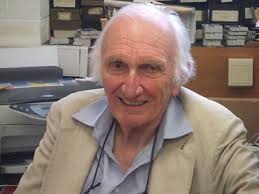 Dr John Rigarlsford Clarke
Dr John Rigarlsford Clarke
John Clarke, who died on 2nd April 2010, aged 85, was a longstanding and enthusiastic member of the Society for the Study of Fertility (now the Society for Reproduction and Fertility). A regular attender at meetings presenting papers on his beloved voles, his commanding presence and strong speaking voice made microphones redundant. His habit of asking a question in the silence following some presentations was much appreciated by young inexperienced presenters. John leapt with great gusto into the running of the Society becoming Business Secretary from 1975-80 and chairman from 1987-90. Those who were present at the annual dinners during John’s chairmanship will remember his “cabaret” performances during his after dinner speeches. John’s devotion to the Society and to its French and US equivalents was evident from the history of the three societies which he wrote in 2007. He was also Editor of the Oxford Reviews of Reproductive Biology (1984-88) and played a significant role in the management of the Journal of Reproduction and Fertility. The Society for the Study of Fertility recognised his significant achievements in reproductive physiology when in 2004 he was awarded the Marshall medal for “outstanding contribution to the study of fertility and reproduction”.
John was born in Perth, Western Australia, where his father was Professor of Geology at the University of Western Australia. Following a degree in Zoology at that university John won a Rhodes scholarship to St John’s College, Oxford. His D.Phil. was on the ecology of the field vole where he worked with Dennis Chitty, his supervisor, and others in the Bureau of Animal Population (BAP). The BAP had been established by Charles Elton before the war and there was a strong research interest in small mammal population dynamics. In later life John co-authored Elton’s Royal Society Biographical memoir. John’s work expanded into studies in reproductive physiology, particularly photoperiodism, both in laboratory stock animals and those from the field. Although his favoured species was the short-tailed field vole, John also found time for studies on the bank vole and wood mouse. Wytham Woods was the source of his voles and it was a place that remained very close to his heart.
John was an enthusiastic and memorable teacher of undergraduates but it was in his role as a supervisor that he excelled. He had numerous research students from all over the world, a testimony to the wider knowledge of his work. He spent time in a various labs overseas including, for example, New Zealand where he worked with Purves and Griesbach, the doyens of pituitary cytology. He had a refreshingly open-minded approach to biological questions and was a thoughtful supervisor, unfailingly supportive to his students. He regularly kept in touch former students and followed their careers with great interest. At his retirement party in 1992 former students came to say thank you from as far away as Australia, Canada, Ghana and far flung parts of the UK too.
It is worth remembering that John’s career encompassed and used the huge changes in techniques available to biologists. In his early days the only ways of measuring pituitary hormones was by bioassay, so no methods, such as radio immunoassay, for measuring hormones in blood. There was little or no electron microscopy, no sequencing of DNA or in situ hybridisation and so on. There were no computers – or at least only enormous room-sized ones – and statistical calculations were done on a mechanical adding machine. But research went on and John added new techniques as they became available.
In the early days of his Oxford career, like many in the biological sciences, John was without a college fellowship but in 1964 he was elected a Fellow of Linacre College and in 1990 became Vice-Principal. He was elected an Emeritus Fellow on his retirement. His research lab was originally based in the then Department of Agriculture but when that department closed, John moved to the Department of Zoology where he maintained a regular presence until shortly before his death. Even after his formal retirement John found other things to do in Zoology and produced a regular newsletter for the department.
Outside Oxford John took on other roles too. He was a member of the Interim Licensing Authority for in vitro Fertilisation from 1990-92 and this was followed by the role of Inspector for the Human Fertilisation and Embryology Authority, a position he held until 2006. He was part of a WHO team in the 1980s inspecting the Shanghai Institute of Planned Parenthood Research.
John was a lifelong peace campaigner and an active member of CND from the 1960s onwards. He participated in demonstrations even up to 2003 in the march against the war in Iraq. He was also a stalwart Labour supporter and party member. Those who knew John recognised that he was very much a family man. Family came first and he was very much a “new man” going home at teatime when his children were small to make sure he had time with them. He married Marianne Fillenz shortly after they met in Oxford in 1950, a partnership which lasted 60 years. He unfailingly supported Marianne’s academic career in neurophysiology. Marianne and their three children, Karen, Eric and Sue, survive him together with their five grandchildren Olly, Frances, Rosa, Daniel and Anna.
John was a fine, respected scientist, but more than that he was a humane and civilised man. He will be much missed.
Anne Grocock
Stuart Milligan
Isabel Leeming
Janet Craven
15th July 2010
http://www.guardian.co.uk/education/2010/jul/08/john-clarke-obituary
Professor Colin Finn
(January 3rd 2010)
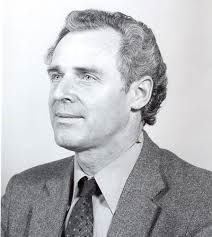 Professor Colin Finn BSc, PhD, MRCVS (1931-2010)
Professor Colin Finn BSc, PhD, MRCVS (1931-2010)
Colin Finn was one of the mainstays of the reproductive biology community in Britain during the last half of the 20th century, in particular the Society for the Study of Fertility (as it was known before it transformed into the present Society for Reproduction and Fertility). He was not only an internationally recognized expert in the biology of the uterus and implantation but also selflessly supported the infrastructure of societies, conferences and publications on which science depends.
Colin was the first editor of Oxford Reviews of Reproductive Biology in 1979, he was at various times Business Secretary, Treasurer and Chairman of the Society for the Study of Fertility, and Editor in Chief of the Journal of Reproduction and Fertility. In all these tasks, and in the various background committees, Colin dealt with the problems, decisions and often difficult people without fuss and with his customary common sense and good humour. It was very fitting that Colin was awarded the Marshall Medal of the Society in 2001 in recognition of his services to the scientific and reproductive biology community. He was also very pleased to have been appointed an Honorary Member of the Society in 2009.
Colin was born in Canterbury, Kent in 1931. His first six years were very happy, but his father died and he was sent away to boarding school. His early days at the school, which he referred to as ‘the orphanage’, were not happy, but he eventually settled down and excelled at sport and academia. After school, he worked for a year in a London office before doing his National Service in the Education Corps. Although he had always thought he wanted to study medicine, he decided he generally preferred animals to people, so he went to study veterinary science at the Royal Veterinary College in London, followed by a degree in Physiology at University College, London. Colin was never afraid of hard work and loved dogs, and he funded his way through university by helping a dog breeder with their dogs in return for free board.
Having decided on an academic career, he worked at Wye College, Kent and then the Royal Veterinary College before taking up the Chair of Veterinary Physiology at Liverpool University in 1978. He remained in Liverpool until his retirement (1999). He was enormously popular with the undergraduate students for his ability to teach a complex subject in an interesting manner. Colin’s enthusiasm for science was indeed evident to anyone who spoke to him – whether in the lab or in the pub with a glass of beer. Many of us remember the glint is his eye as he became passionate about something in conversation.
Colin never aspired to have a big research group, but preferred a few close collaborators. In his early days at the Royal Vet College he worked with both Anne McLaren and John Biggers. In 1975, he published (with another great friend, David Porter) what was the first ever book devoted to the great scientific love of his life – the Uterus. Many of Colin’s papers on how the uterus prepares itself for, and responds to, implantation, were with Len Martin. Colin also had a broad interest in biological and evolutionary questions and a number of his later papers and talks were devoted to “Why do women menstruate?”
Although Colin was an internationally recognised expert, he never sought fame – his interest and love was simply thinking about problems, discussing them and doing the experiments himself. He was probably never happier than being in the lab, with a mouse in one hand, ideas in his head and someone to discuss them with. Colin was very quick to praise the talent of others and he had great admiration for many of his colleagues. He was always interested in what drove people to be as they are but was especially irritated by pomposity and duplicity, to which he had been sensitised by some of his early exposures in his scientific career.
Colin had a very strong sense of right and wrong and social justice, and he was not afraid to stand up for what he believed in. Like many others, he became increasingly unhappy with the way that Universities were changing from institutions in which ideas and scholarship were prized, to institutions in which money and bean counting seemed the priority. One of his thoughts was that all universities should have a circular building, with a circular corridor that went all away around, with offices off the corridor. That way, all those people who liked spending so much time in committees could spend all day walking from room to room to the next committee without wasting any time. Colin had a lovely sense of humour and was a fountain of very funny jokes – but he also liked a good argument – whether it was about science, politics, religion or indeed anything. He wasn’t always correct and he had a remarkably stubborn streak!
Science did not totally dominate Colin’s life, and he had a very strong sense of family. He also lived in a parallel universe of auctions, and buying, selling and repairing antiques – and again he had an infectious enthusiasm about everything – especially the beauty of wood. Having said he never sought fame in science, he was seen at the front of the auction audience of “Cash in the attic” when the TV program came from the Chester area.
In the end, it was Colin’s personality that will leave the greatest impression on us all. To so many, he was a genuine friend, – sensitive, compassionate and supportive, with a great sense of humour. He was tremendous company, an excellent scientist – and the nicest guy.
Colin died on January 3rd 2010 after a short illness. He is survived by his wife, three daughters, seven grandchildren and three great-grandchildren
Stuart Milligan
